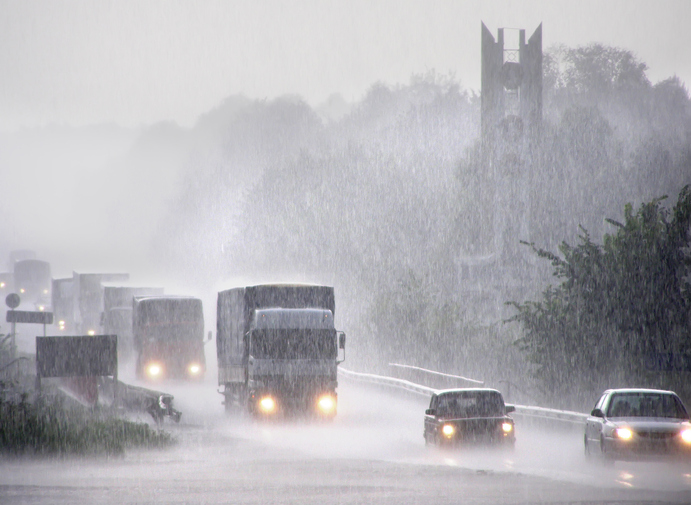
No matter the season, an important part of a dispatcher’s responsibility is to route shipments around potentially dangerous weather. In the summer, conditions like high winds, tornadoes, and torrential rain can make the roads dangerous, and in the winter months, hail, snow, and fog can reduce visibility, make roads slippery, and create huge traffic delays.
Anticipating these various conditions and having a viable backup plan will help you ensure shipments are delivered on time, goods are intact, and truck drivers are safe on the roads. If you’re interested in a career in dispatching, here are some simple rules for routing around bad weather.
Monitor Forecasting Systems Closely for Changes in Weather Conditions
The first rule for routing around hazardous weather is to be aware of potentiality dangerous conditions. Advanced weather forecasting systems like the AccuWeather Enterprise Solutions forecasting system, for example, provide weather reports with an extremely short lead time and high accuracy rate. These pinpointed reports allow professionals who have undergone dispatcher training to relay important weather data to their drivers who are on the road, helping them to avoid potentially dangerous or costly conditions. Dispatchers should play close attention to weather in areas that are known to have quick and drastic weather changes and high winds, like mountain passes or the prairies.
Pros with Dispatcher Training Use Routing Software Programs to Identify New Routes
When dispatching a truck that may run into unfavourable weather conditions, dispatchers should have several backup routes identified in advance. Planning alternative routes before running into bad weather helps ensure that if the truck driver is driving towards dangerous weather conditions, they can be rerouted and get back on track without a huge delay.
There are many routing software programs on the market today that can help dispatchers generate safer routes in case of a weather emergency. By using these routing programs, dispatchers can improve driver uptime, increase customer satisfaction, and mitigate losses.

Pros with Dispatcher Training Should Keep the Effects of Delivery Changes in Mind
The best dispatchers understand that an entire fleet’s operations are interconnected. Therefore, if one shipment going to a certain destination is delayed or rerouted, it could create an entire chain reaction of late shipments. For example, you may be dispatching a truck from Montreal to Ottawa. When the truck gets to Ottawa, it’s going to deliver its shipment, load up again, and drive to Toronto to deliver another shipment. However, if the truck is delayed from Montreal to Ottawa, it will make the next shipment to Toronto late. Thus, dispatchers will either need to organize another truck driver to bring the shipment to Toronto on time or work to resolve the late shipment with the shipper.
When redirecting shipments due to weather after your transportation operations program, make sure you consider the impact it may have on future shipments and find solutions as quickly as possible.
Safety is the Most Important Factor When Dispatching Trucks in Rough Weather
The most important rule when routing around dangerous weather conditions is safety first. Although getting shipments delivered on time is important, there’s nothing to be gained from risking a truck driver’s safety and potentially damaging expensive equipment by encouraging risky driving. If you’re tasked with dispatching during unsafe weather, it’s always best to air on the side of caution.
Did you know Automotive Training Centres is one of the leading dispatch schools in Montreal?
Learn more about training with us. Contact ATC today!

